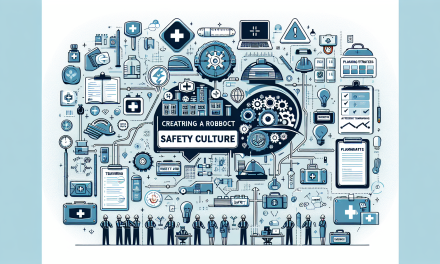Table of Contents
- Introduction
- Understanding Risk Assessment
- Importance of Risk Management
- Core Process of Risk Assessment
- Tools and Techniques
- Implementing Effective Risk Management Strategies
- Case Studies and Real-World Applications
- FAQs
- Conclusion
Introduction
In today’s ever-evolving landscape, organizations face increasingly intricate challenges associated with risk. Consequently, mastering advanced process risk assessment and management has never been more critical. By understanding how to identify, analyze, and mitigate risks effectively, businesses can navigate uncertainties and enhance their decision-making processes.
Understanding Risk Assessment
Risk assessment serves as the backbone of any effective risk management strategy. It involves identifying potential hazards, evaluating the risks associated with them, and determining appropriate mitigation strategies. Moreover, comprehending these elements empowers organizations to protect their assets, employees, and overall business objectives.
The Key Elements of Risk Assessment
To facilitate a comprehensive understanding, consider breaking down risk assessment into key components:
- Hazard Identification: This first step involves pinpointing anything that could potentially cause harm. Such hazards can stem from various sources, including operational processes, environmental conditions, or human error.
- Risk Analysis: Following hazard identification, conducting a thorough analysis helps quantify the likelihood of occurrences and the potential impacts.
- Risk Evaluation: Here, prioritize identified risks based on their significance and the effectiveness of existing controls, thus assisting in making informed decisions.
Importance of Risk Management
Implementing effective risk management provides several advantages:
- Minimized Losses: Prioritizing risk management helps organizations reduce financial losses associated with unexpected incidents.
- Enhanced Reputation: Demonstrating a commitment to safety and well-being fosters goodwill among employees, customers, and stakeholders.
- Increased Efficiency: Identifying inefficiencies and optimizing processes can result in better resource management and operational productivity.
Connecting Risk Management to Health and Safety
Organizations often link risk management to health and safety practices. To explore this connection further, consider reading this comprehensive guide to effectively managing health and safety in the workplace. This resource delves into practical strategies that integrate risk management with promoting workplace safety.
Core Process of Risk Assessment
Understanding the core process of risk assessment provides practical insights into assessments:
To start, organizations can employ the following systematic approach:
Step 1: Define the Scope
Clearly outline the scope of the risk assessment. This process involves identifying which processes, locations, or activities will be evaluated for risks. Additionally, the scope should align with the organization’s overall objectives.
Step 2: Gather Required Data
Collect comprehensive data related to the scope defined. This may include historical data on incidents, operational reports, and employee feedback. Utilization of data helps create an informed basis for the subsequent steps.
Step 3: Identify Risks
With data in hand, systematically identify potential risks through brainstorming sessions, expert consultations, and industry benchmarks. Furthermore, engage diverse teams to enrich the identification process.
Step 4: Analyze and Evaluate Risks
After identifying risks, prioritize them based on their likelihood and potential impact. Employ qualitative and quantitative methods to analyze the risks effectively.
Step 5: Implement Mitigation Strategies
Decide on appropriate mitigation strategies for each prioritized risk. This can involve implementing safety equipment, training programs, or updating policies and procedures.
Tools and Techniques
Utilizing the right tools and techniques enhances the effectiveness of risk assessment and management. Some popular tools include:
- Risk Matrix: This visual tool enables organizations to assess risks by plotting them based on their likelihood and severity.
- Safety Audits: Conducting regular audits ensures compliance with safety standards and identifies areas for improvement.
- Brainstorming Sessions: Involving team members in brainstorming sessions fosters creativity and brings diverse perspectives on potential risks.
Technology in Risk Assessment
Advancements in technology offer innovative solutions that enhance the risk management process. Tools like risk management software assist in tracking risks and documenting assessments, making it easier for organizations to maintain comprehensive records.
Implementing Effective Risk Management Strategies
Successfully managing risks requires the implementation of sound strategies. Here are some effective approaches to consider:
Establish Clear Policies
Create clear and concise risk management policies that outline procedures, responsibilities, and protocols for all employees.
Training and Awareness Programs
Facilitating regular training sessions enhances employees’ understanding of risk management, allowing them to contribute actively to maintaining a safe environment.
Continuous Monitoring and Review
Once strategies are in place, consistently monitor and review their effectiveness. It is crucial to adapt and update the strategies as needed to align with changing conditions.
Case Studies and Real-World Applications
Examining real-world applications of advanced risk assessment and management methodologies can offer useful insights. For example, consider industry leaders who have successfully integrated rigorous risk management practices into their operations:
- A manufacturing company implemented a comprehensive risk management system that reduced workplace accidents significantly, improving employee morale and productivity.
- A technology firm employed risk assessment tools to identify vulnerabilities in their software products, leading to improved security protocols and customer trust.
Such examples highlight how systematic risk management enables organizations to achieve their objectives while minimizing potential negative impacts. If you want to delve deeper, the Advanced Process Risk Assessment & Management Certification Course serves as an excellent resource.
FAQs
What are the main benefits of advanced risk assessment?
Advanced risk assessment helps organizations enhance decision-making, minimize losses, improve safety, and establish a proactive risk culture.
How often should organizations conduct risk assessments?
Organizations should conduct risk assessments regularly, typically at least once a year or whenever significant changes occur in operations or regulations.
Can technology assist in risk management?
Absolutely! Technology offers tools that streamline risk assessment processes and enhance documentation, monitoring, and reporting.
Conclusion
In conclusion, mastering advanced process risk assessment and management strategies equips organizations to navigate today’s complex landscape effectively. By embracing systematic methodologies, utilizing appropriate tools, and fostering a proactive risk culture, businesses can protect their interests and ensure long-term sustainability. As you reflect on your organization’s risk management approach, consider engaging in comprehensive training to enhance your capabilities further.





